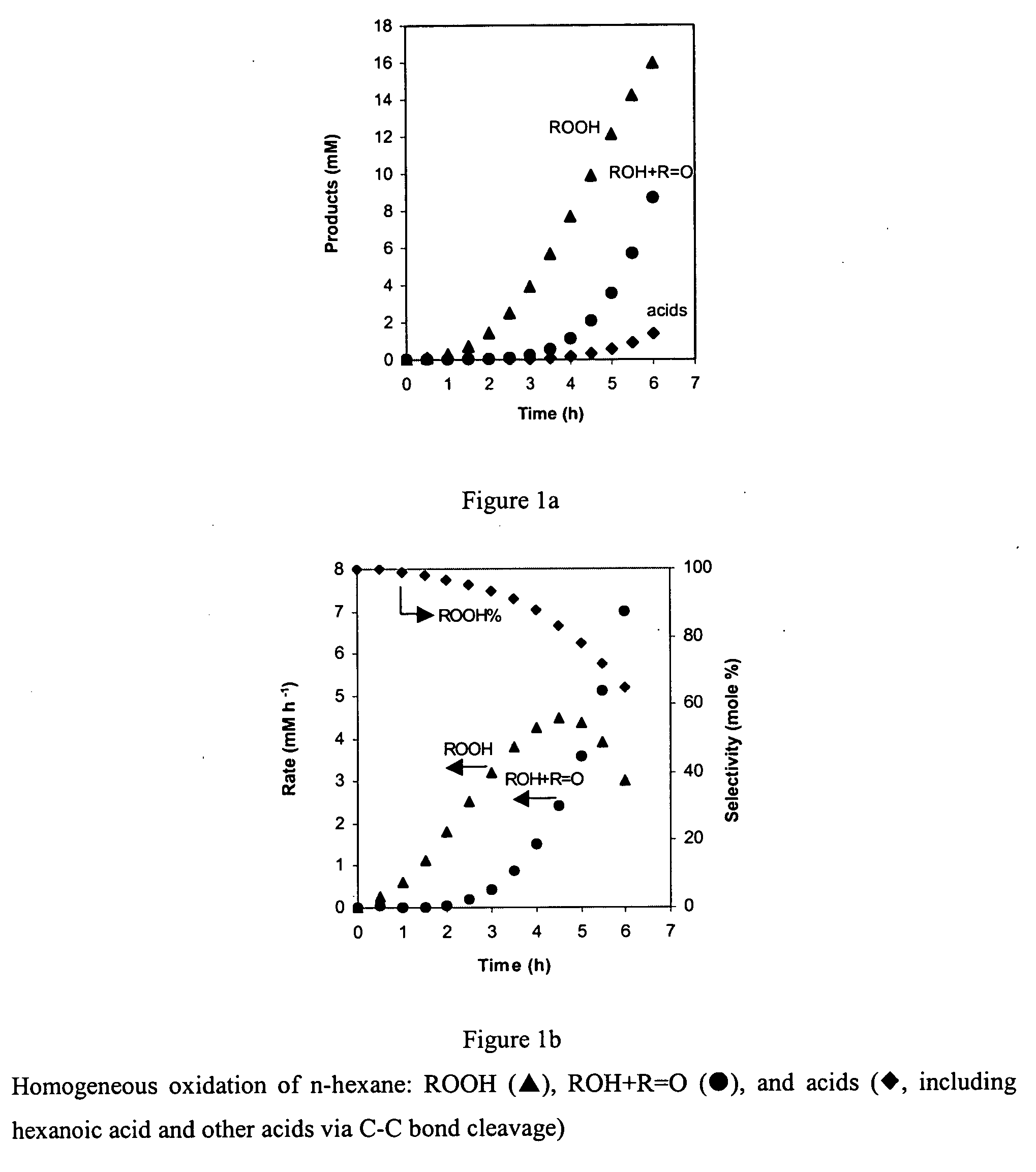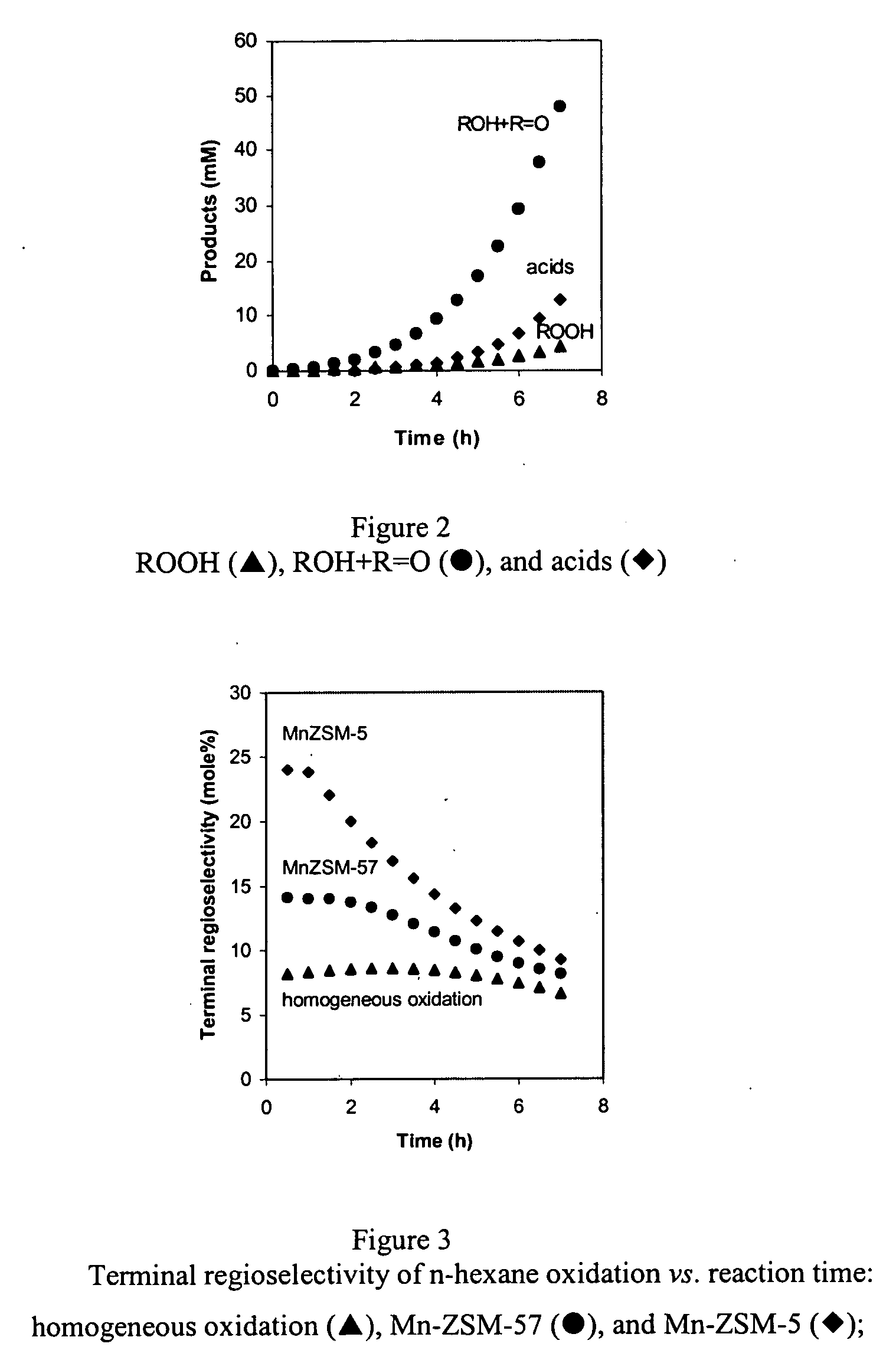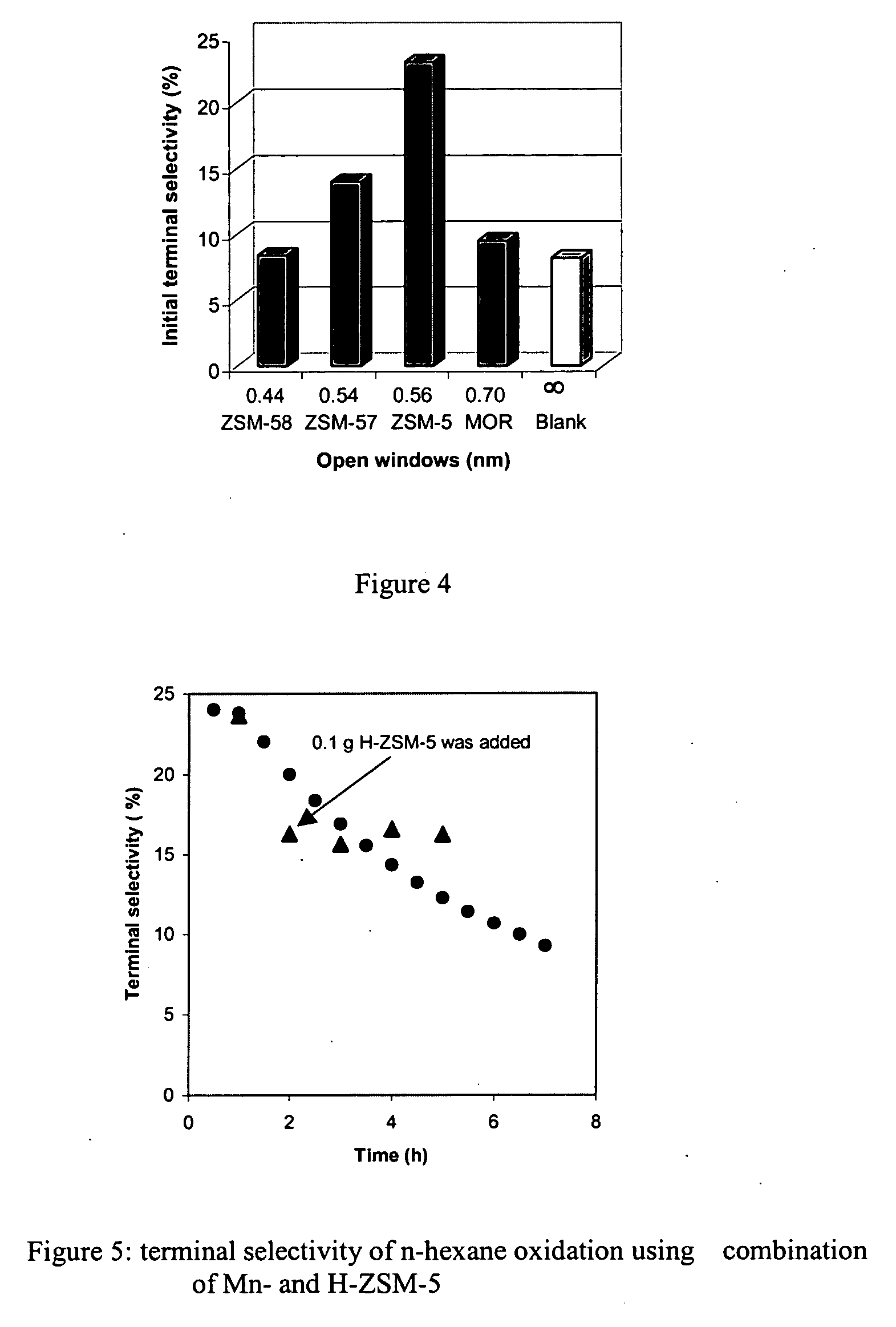Process and catalyst for oxidation of hydrocarbons
a technology of hydrocarbons and catalysts, which is applied in the preparation of carboxylic compounds, physical/chemical process catalysts, ether/acetal/ketal group formation/introduction, etc., can solve the problems of complex chemistry and expensive feeds, low efficiency of oxidation process, and low efficiency of selective oxidation of alkanes, especially straight-chain alkanes
- Summary
- Abstract
- Description
- Claims
- Application Information
AI Technical Summary
Benefits of technology
Problems solved by technology
Method used
Image
Examples
examples
[0035] The following are representative examples of the invention. However, they are only examples; they are not intended to be limiting features of the invention.
[0036] Synthesis of Catalysts
[0037] Catalysts used in the experiments comprised the zeolites ZSM-5, ZSM-35, ZSM-57, ZSM-58 and mordenite. ZSM-5, ZSM-35 and ZSM-57 are representative of catalyst supports of the invention insofar as selective terminal oxidation of alkanes is concerned; ZSM-58 and mordenite are zeolites that are not within the scope of the invention for this particular purpose, but can be useful as supports for other oxidation reactions within the scope of this invention.
[0038] NH4-Mordenite (MOR) was obtained from Zeolyst (CBV 21A; SiO2 / Al2O3=20). NH4-ZSM-5 (MFI) was obtained from ALSI-PENTA Zeolithe GmbH (SM-27; SiO2 / Al2O3=24). ZSM-58 (DDR) was prepared in Na-form using procedures described in U.S. Pat. No. 4,698,217. The organic template in ZSM-58 was removed by thermal treatment at 803 K in flowing dry...
PUM
| Property | Measurement | Unit |
|---|---|---|
| temperature | aaaaa | aaaaa |
| temperature | aaaaa | aaaaa |
| pore diameter | aaaaa | aaaaa |
Abstract
Description
Claims
Application Information
 Login to View More
Login to View More - R&D
- Intellectual Property
- Life Sciences
- Materials
- Tech Scout
- Unparalleled Data Quality
- Higher Quality Content
- 60% Fewer Hallucinations
Browse by: Latest US Patents, China's latest patents, Technical Efficacy Thesaurus, Application Domain, Technology Topic, Popular Technical Reports.
© 2025 PatSnap. All rights reserved.Legal|Privacy policy|Modern Slavery Act Transparency Statement|Sitemap|About US| Contact US: help@patsnap.com



